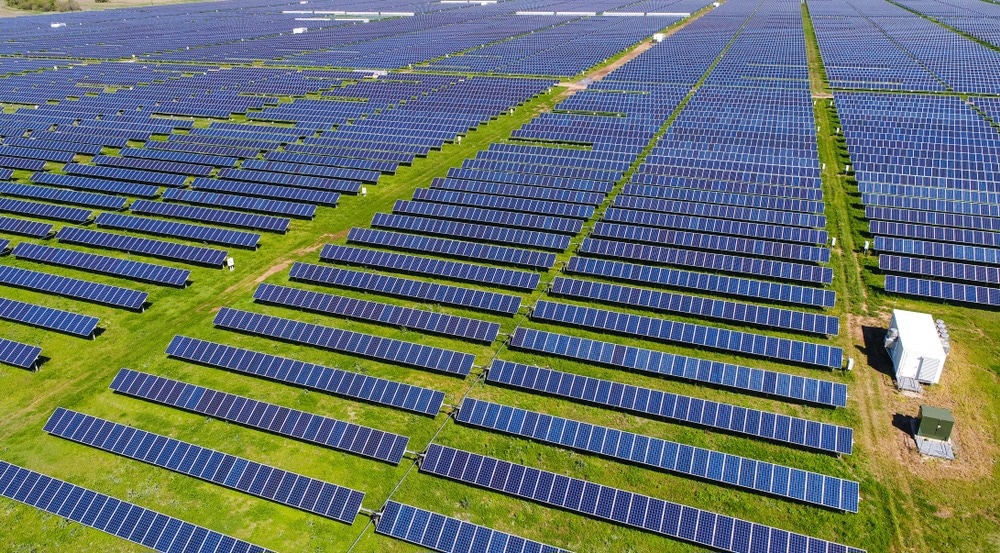In a recent article published in the journal Engineering Science and Technology, an International Journal, researchers explored the application of unmanned aerial vehicles (UAVs) equipped with thermal imaging sensors to analyze solar farm efficiency. Their research aimed to validate the feasibility and effectiveness of this approach in detecting temperature variations, calculating photovoltaic (PV) efficiency, and identifying performance issues in solar panels.

Image Credit: Roschetzky Photography/Shutterstock.com
Background
Solar energy is a clean and renewable power source with numerous environmental and economic benefits. However, solar panels, the critical components of solar farms, can be impacted by various factors that reduce their efficiency and lifespan. These factors include temperature fluctuations, dust accumulation, shading, degradation, and faults. Therefore, regular and precise monitoring and analysis of solar panel performance are essential to optimize energy output and preempt potential failures.
Traditionally, solar farm monitoring has relied on manual inspections and periodic assessments, which are time-consuming and labor-intensive. However, integrating UAVs with thermal imaging sensors has revolutionized solar farm analysis in recent years.
Thermal imaging is a technique that captures infrared radiation emitted by objects and converts it into visible images displaying temperature distribution. UAVs equipped with thermal cameras can capture aerial thermal images of solar panels, enabling quick, accurate, and cost-effective temperature measurement, anomaly detection, and PV efficiency calculation.
About the Research
In this paper, the authors developed a novel methodology for analyzing solar farms' efficiency using UAV-based thermal monitoring. They selected a solar farm in Konya, Türkiye, for their study. This farm spans 5.59 hectares and comprises 12,962 solar panels arranged in 91 arrays.
The study used a multirotor UAV (DJI Matrice 300 RTK) with an integrated camera (DJI Zenmuse H20T), which features thermal, wide-angle, and 200x zoom capabilities. The UAV also includes a real-time kinematic (RTK) positioning system that delivers high-precision aerial photographs with centimeter-level accuracy.
The researchers conducted low-altitude photogrammetric flights with the UAV over the solar farm at three different times: morning, midday, and afternoon. They captured thermal images of the solar panels in radiometric joint photographic experts group (R-JPEG) format with a resolution of 640x512 pixels. These images were then converted into a tagged image file format (TIFF) with reflectance values and processed using photogrammetric methods to produce thermal orthomosaic data-high-resolution images that combine multiple overlapping images into a single dataset.
The thermal orthomosaic data were segmented using image processing techniques to extract the geometry and temperature of each solar panel. Finally, the study calculated the PV efficiency of each panel using a formula that relates the panel efficiency to the panel temperature, the reference temperature, and the panel's temperature coefficient.
Research Findings
The outcomes revealed significant variations in the temperature and efficiency of the solar panels throughout the day and across the solar farm. The solar panels' lowest and highest recorded temperatures were 6.09 °C and 66.37 °C, respectively. Similarly, the PV efficiencies varied, with the lowest recorded efficiency at 17.03% and the highest at 18.25%. Therefore, UAV-based thermal monitoring proved effective for solar farms' thermal monitoring and efficiency analysis. UAVs could capture high-resolution thermal data of solar panels, allowing for calculating PV efficiency and identifying performance issues.
The authors noted that several factors influenced the solar panels' temperature and efficiency, including the sun's position, cloud cover, and orientation of the panels. The highest efficiencies were recorded in the afternoon when the temperature was lower, and the solar incidence angle was gentler. The study identified certain panels with lower efficiency, indicating potential performance issues or degradation.
Applications
This research demonstrated the extensive potential of UAV-based thermal monitoring for solar farm management. This approach facilitates rapid, accurate, and comprehensive efficiency analysis of solar farms, helping to optimize energy production and enhance economic viability.
Detecting temperature variations and anomalies in solar panels can promptly identify and address performance issues, prevent failures, reduce operational costs, and improve safety. Furthermore, regular data collection enables the tracking of long-term performance trends and the evaluation of maintenance strategies.
Conclusion
In conclusion, the novel approach showcased the significant advantages of using UAVs for the thermal monitoring of solar farms, paving the way for improved efficiency and performance management in the renewable energy sector.
The researchers highlighted several factors that could affect the temperature and efficiency of solar panels, such as the sun's position, cloud cover, and panel orientation.
Moving forward, they suggested that future research should focus on enhancing the resolution of thermal cameras, developing automatic segmentation and analysis methods, and integrating additional sensors such as optical and LIDAR for more comprehensive solar farm monitoring.
Disclaimer: The views expressed here are those of the author expressed in their private capacity and do not necessarily represent the views of AZoM.com Limited T/A AZoNetwork the owner and operator of this website. This disclaimer forms part of the Terms and conditions of use of this website.
Source:
Akay, S, S., Özcan, O., Özcan, O., Yetemen, Ö. Efficiency analysis of solar farms by UAV-based thermal monitoring. Engineering Science and Technology, an International Journal, 2024, 53, 101688. https://doi.org/10.1016/j.jestch.2024.101688